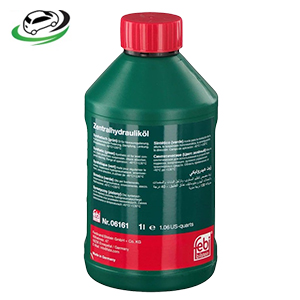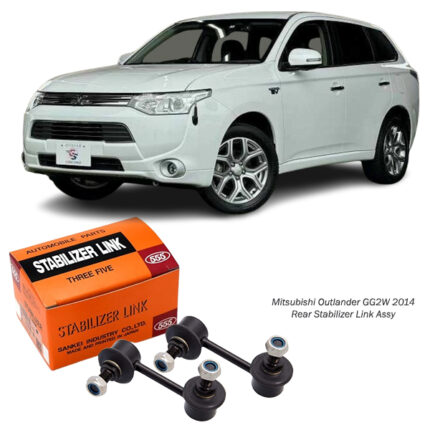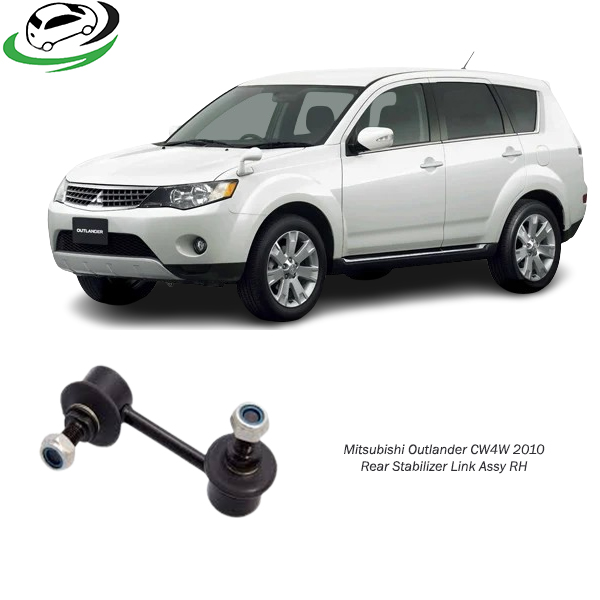-8%
Get Mitsubishi Outlander CW4W 2010 Rear Stabilizer Link Assy RH 0423-CW8RR
The rear stabilizer link assembly, also known as the sway bar link, plays a key role in maintaining vehicle stability and handling. Located in the suspension system, this component connects the sway bar (stabilizer bar) to the control arm or strut of a vehicle’s rear wheels. Let’s explore its structure, functionality, benefits, and essential maintenance tips for keeping the rear stabilizer link in top shape.
1. Structure and Composition
The rear stabilizer link assembly is designed to help reduce body roll and improve traction while the vehicle is cornering or driving over uneven surfaces. This link is generally composed of a steel or metal rod with ball joints or bushings at each end. These components allow flexibility, enabling the link to pivot and absorb motion effectively.
A stabilizer link typically consists of:
- Rod: A metal bar, usually steel or aluminum, that provides the necessary rigidity and durability for handling loads and torque.
- Ball Joints/Bushings: These are either rubber bushings or ball joints attached at each end of the link, providing a flexible connection to absorb movement between the sway bar and the suspension arm.
- Protective Coating: Often, the metal rod has a protective coating to prevent corrosion from moisture, road salt, and other environmental factors.
2. Function of the Rear Stabilizer Link Assembly
The stabilizer link’s primary function is to reduce body roll and enhance cornering stability by working alongside the sway bar. The sway bar connects the left and right wheels and is attached to the chassis, designed to keep the vehicle stable while cornering. When a vehicle turns, centrifugal force causes the body to lean away from the direction of the turn. The stabilizer link and sway bar counteract this leaning motion by distributing the force evenly across the vehicle’s suspension, allowing for smoother cornering.
In technical terms, when the vehicle turns, the stabilizer link transfers forces generated by the sway bar to the opposite side of the vehicle, effectively reducing the load on one side. This results in:
- Increased traction: Distributing weight evenly helps both wheels maintain optimal contact with the road.
- Enhanced handling: Minimizing body roll allows for sharper, more responsive steering, giving the driver better control.
3. Benefits of a Functional Rear Stabilizer Link Assembly
The rear stabilizer link assembly directly impacts ride quality and stability. The benefits include:
- Improved Stability: The stabilizer link assembly ensures stability, particularly when navigating curves, by minimizing excessive body roll, which can cause discomfort or even instability at higher speeds.
- Enhanced Traction: By distributing weight more evenly across the rear wheels, the stabilizer link keeps the wheels in contact with the road, enhancing grip and control.
- Better Handling: A functional stabilizer link assembly contributes to tighter, more responsive handling, making steering feel more connected and precise.
- Increased Passenger Comfort: Minimizing body roll and sway makes the ride more comfortable for passengers, particularly when driving on winding roads or uneven terrain.
- Reduced Component Wear: The stabilizer link helps balance forces in the suspension system, reducing stress on other suspension components, which can prolong their lifespan.
4. Signs of a Failing Rear Stabilizer Link Assembly
A failing or worn-out rear stabilizer link can compromise vehicle stability and safety. Some common signs include:
- Clunking or Knocking Noise: A loose or worn stabilizer link can cause clunking or knocking sounds from the rear suspension, especially when driving over bumps or turning corners.
- Increased Body Roll: If the stabilizer link is failing, the vehicle may lean more noticeably when cornering or changing lanes.
- Uneven Tire Wear: If the stabilizer link is malfunctioning, it can cause the vehicle’s suspension to become unbalanced, leading to uneven tire wear.
- Poor Handling and Steering: If the rear stabilizer link is loose or broken, steering may feel less responsive, affecting the vehicle’s handling and control.
- Excessive Swaying: Drivers may notice excessive swaying or body movement when driving on rough roads or during sharp maneuvers.
5. Maintenance Tips for the Rear Stabilizer Link Assembly
To ensure optimal performance and longevity of the stabilizer link assembly, regular inspection and maintenance are recommended:
- Routine Inspections: It’s advisable to check the rear stabilizer link assembly during routine vehicle maintenance. Look for signs of wear, corrosion, or damage to the ball joints and bushings.
- Lubrication: For stabilizer links with grease fittings, it’s essential to lubricate them regularly. Lubrication reduces friction and prevents premature wear on ball joints.
- Replace Damaged Bushings or Ball Joints: If the bushings or ball joints are worn or damaged, they should be replaced immediately to avoid further issues. This can help prevent noises and improve handling.
- Check for Corrosion: The stabilizer link is exposed to environmental elements, so it’s essential to check for rust or corrosion that may weaken the metal rod. A rust-inhibiting spray can help protect the link from corrosion.
- Monitor Tire Wear: Uneven tire wear can sometimes indicate issues with the stabilizer link assembly. Regularly check tire wear patterns and address any unusual patterns by inspecting the rear stabilizer link and other suspension components.
6. Replacement and Costs of Rear Stabilizer Link Assembly
Replacing a rear stabilizer link assembly is typically straightforward, as it involves unbolting the old link and installing a new one. However, replacing the link does require knowledge of suspension systems, and for some vehicles, it may need specialized tools.
- Replacement Process: The replacement process generally involves lifting the vehicle, removing the nuts and bolts holding the stabilizer link, and installing the new part. It’s crucial to torque the bolts to the manufacturer’s specifications to ensure stability.
- Cost: The cost of a rear stabilizer link can vary, depending on the vehicle make, model, and quality of the part. Generally, it ranges from $20 to $100 per link, and labor costs may vary depending on the mechanic or shop.
- Professional Installation: If you’re unfamiliar with suspension components, it may be best to have a professional mechanic handle the replacement to ensure the job is done correctly.
7. Quality and Compatibility Considerations
When selecting a replacement stabilizer link, it’s essential to choose a part that is compatible with your vehicle model and made of durable materials. Consider opting for high-quality brands that offer warranties, as the quality of the stabilizer link can affect performance and durability. Quality stabilizer links may have a reinforced design and higher-quality bushings that can withstand greater stress and reduce the risk of early failure.
8. Conclusion
The rear stabilizer link assembly is an essential component for vehicle stability, handling, and passenger comfort. It helps distribute force across the rear suspension, reduces body roll, and maintains optimal contact between the tires and the road. Regular inspection, timely maintenance, and quality replacements are key to ensuring your stabilizer link assembly functions as intended.
By taking good care of the rear stabilizer link and other suspension components, drivers can enjoy smoother rides, increased control, and greater safety on the road.
Follow us on Facebook for more parts.



